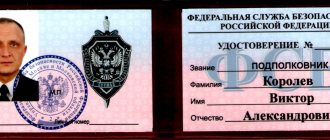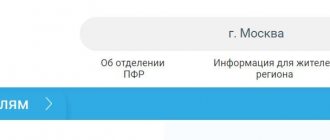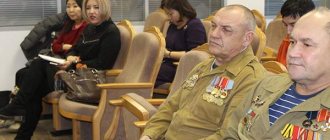Author: Fuchsia
01 August 2020 13:21
Tags: life nomad culture Nenets people project Russia photo
42834
16
The Nenets are a nomadic people in Russia, inhabiting the Eurasian coast of the Arctic Ocean from the Kola Peninsula to Taimyr. The need to survive in the harsh conditions of the Far North taught them to build tents, engage in reindeer herding, sew fur coats from skins and eat raw meat with blood. Every year, the Nenets move thousands of kilometers along ancient reindeer migration routes.
Climate
For an unprepared person, the climatic conditions in the Far North will seem extreme. Long winters, cold that lasts for nine months and hot, stuffy summers.
Anton told how much the climate differs from the usual Altai: “It’s really harsh in winter, because it’s not winter and there’s snow there, but it’s cold. When the snow melts in Barnaul, it still remains there for a month and a half. But if the snow melts, it doesn’t mean it’s getting warmer, it’s still cold there. Summer is literally one and a half to two months. I would probably call this kind of summer uncomfortable. If, let’s say, it’s +30 here now, you go out and it’s stuffy and hot there, if it’s +30, then you just turn out the lights. Everything evaporates, and there is simply nothing to breathe on the street. It used to be that you worked on the street in a robe, unscrewed an ordinary nut and sweat poured out of you.”
But the nature of the Far North also has its own charms. For example, white nights or northern lights.
And during the polar nights, we had to work in the dark, says Stanislav, with the sun only coming out for a couple of hours: “The nature there is beautiful, there are always sunsets, white nights in summer, and vice versa in winter. The Northern Lights are very beautiful. In winter, the sun comes out at one o'clock in the afternoon, rolls slightly straight across the horizon, and an hour and a half later it sets. It’s interesting that at this time we had lunch (laughs) so we didn’t see the sun during working hours in winter. The work was not difficult, I will say this, it was interesting. In winter there is snowfall, and blizzard, and wind, you go outside, and you can’t close the door behind you, because it’s just blowing out. You feel like some kind of Spartan. It was cool, it felt unforgettable (laughs).”
Such a harsh climate also affects health. Statistics show that in the Altai Territory the rate of cases of influenza is 8.5 per 100 thousand people. In Ugra, this figure reaches 203 per 100 thousand people, and in the Yamalo-Nenets Autonomous Okrug it is even 240 per 100 thousand people. Therefore, some have to choose income or health.
Who will receive the land
Land will be issued to everyone whose work experience in the North and equivalent areas is 20 years or more. For the most part, these are people who have already reached retirement age. A proposal to amend the Land Code to supplement the list of grounds according to which land is provided free of charge for ownership and gratuitous use is also being considered.
There is an opinion that by issuing land to northerners, an active and able-bodied population will begin to be attracted to the countryside, and this will contribute to its revival.
How do reindeer herders live in the Far North (38 photos)
In Russia, a huge number of people still live in practically unchanged primitive conditions. They live in the north in the tundra, grazing reindeer just like thousands of years ago... It’s almost always cold and snowy here. There is no civilization. Even the compass is going crazy. These pictures may look like stage decoration, but it’s all for real. Look!

1 This photo shows a family of reindeer herders. It could have been made a hundred years ago; outwardly, almost nothing has changed in their lives. Reindeer herders still roam the tundra, moving from place to place. And once a year they get together and come to the village, the only center of civilization for many kilometers.

2 To look at the life of reindeer herders, it is not enough to fly to Novy Port; you need a guide through the tundra and transport. In winter there are two options, and guests most often get there by all-terrain vehicle.
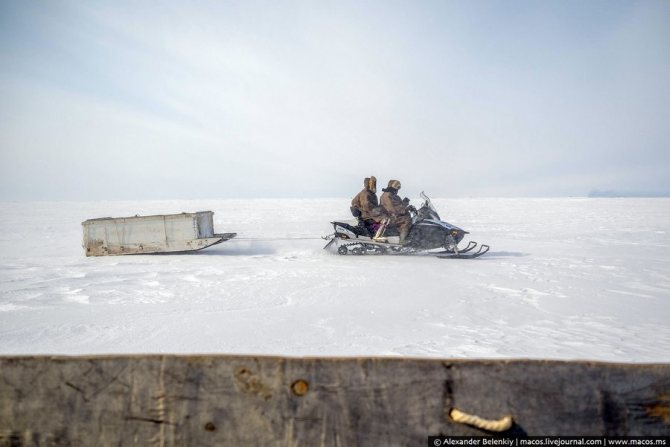
3 The locals have a fast horse-snowmobile, a Yamaha or a Buran. A wooden box is attached to the car on skis: several people or luggage fit into it.
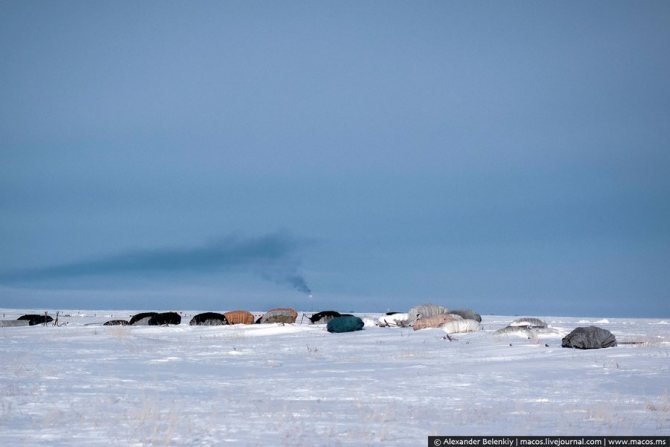
4 Along the way, among the white desert, Nenets cemeteries are barely visible: the same boxes, but without skis. The dead are not buried here, but left on the ground. The photo shows a storage room for reindeer herders. At the end of summer, all light things are left in a designated place on the sled, and when the snow melts, they return for them.

5 One of the tundra families lives twenty kilometers from the village. It takes an hour to get there.
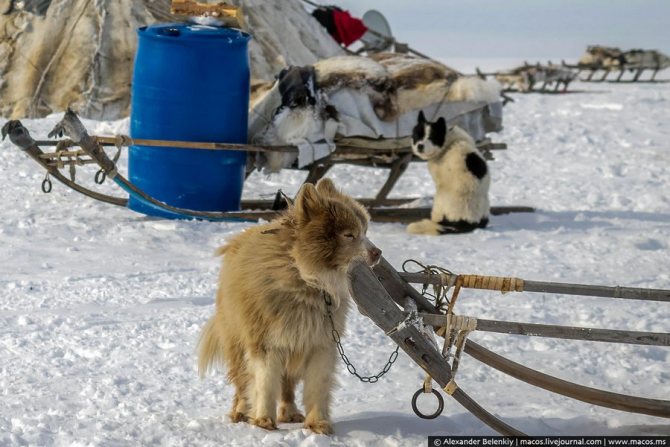
6 It is difficult to explain why this particular place was chosen for the parking lot. Just desert, just snow. There are huskies tied to the sleds, which began to bark heart-rendingly as soon as they sensed strangers. The most reliable alarm system. Small dogs are not capable of pulling a sled, but they cope well with the role of shepherds: that’s what they are called, reindeer huskies.
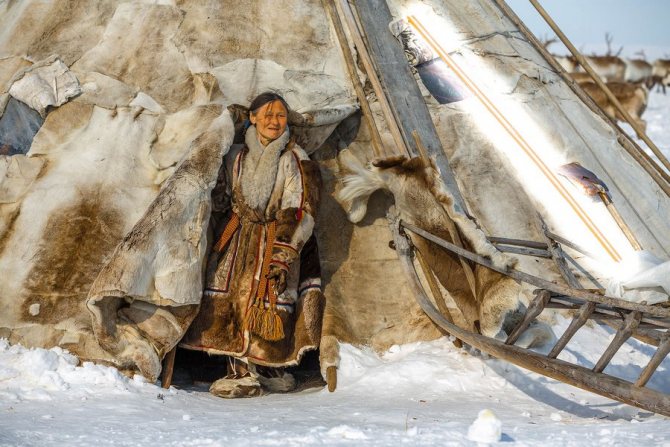
7 A woman came out of the chum in a traditional outfit - a malitsa, made of deerskin. The chum itself was also assembled “from deer”. “Nothing has changed for a thousand years,” I thought and decided to walk around the hut.
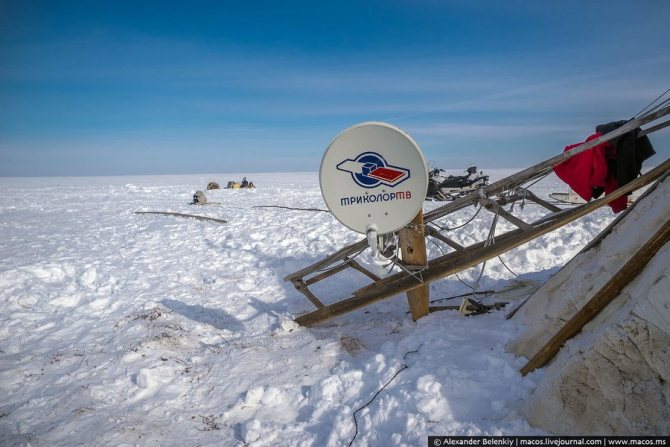
8 A satellite dish near a house made of sticks and deerskin...no, after all, we are in the twenty-first century.
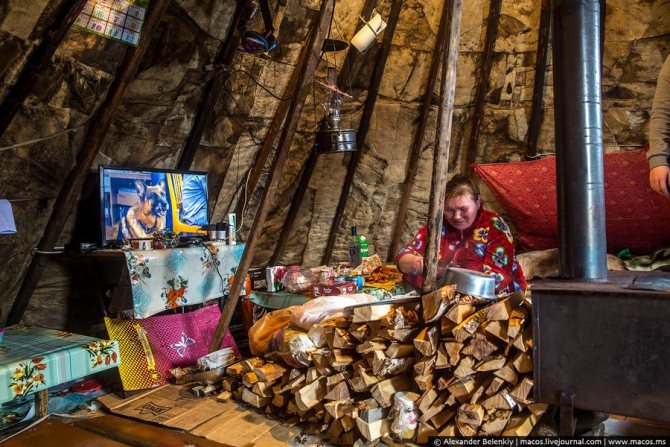
9 The owner of the tent in a colorful robe greeted us without looking up from the screen where “Commissar Rex” was shown. Two smartphones were charging near the TV. There was an automatic air freshener hanging on the wall.
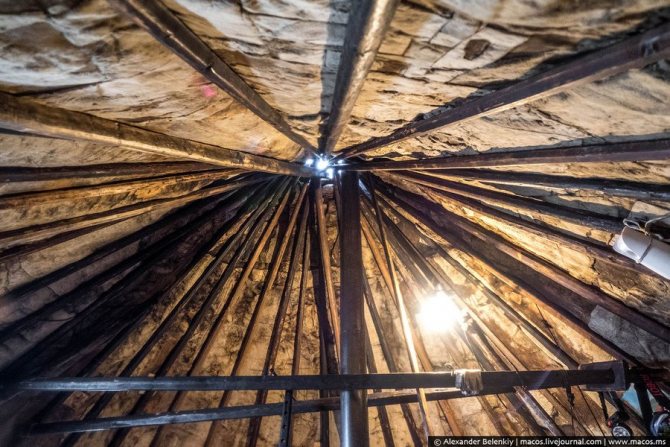
10 I would like to talk about the features of plague construction, especially since there are interesting details there. For example, how often do reindeer skins need to be changed, how quickly can they assemble or disassemble their hut, but unfortunately, at that very moment my camera stopped working, and I tried in every possible way to bring it back to life. Unfortunately, it didn’t help, and most of the photographs in this report were taken not by me, but by Yamal photographer Danil Kolosov. Thank him very much, he helped me out!
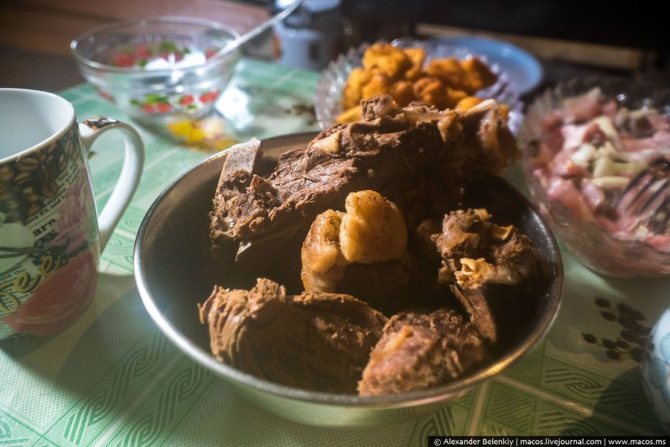
11
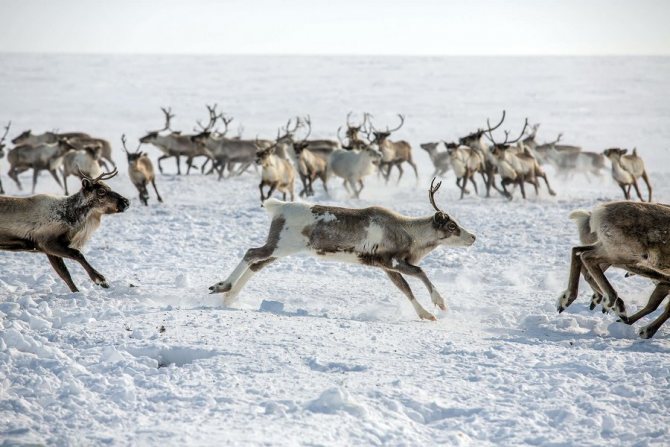
12 Reindeer husbandry is practiced in one and a half dozen northern regions of Russia, but it is in the Yamalo-Nenets Okrug that the largest number of reindeer is found; in 2010, there were 660 thousand deer, three times more than in the next largest region, Yakutia.

13 And the deer in these places is not just livestock, but a breadwinner. Moreover, in the literal sense: venison forms the basis of the diet of residents of northern villages and tundra dwellers themselves; houses and clothes are made from reindeer skins.

14
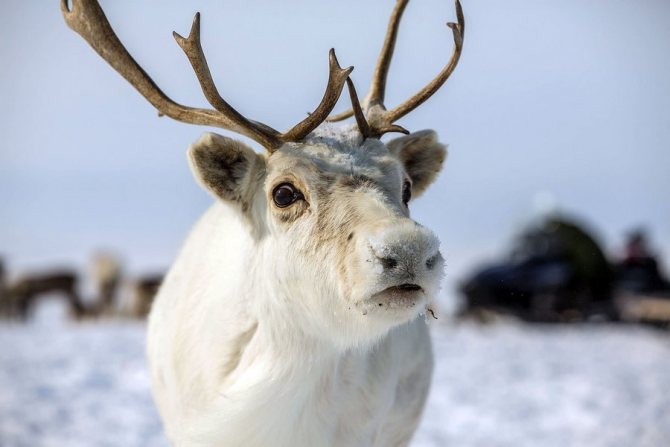
15 But deer is not only valuable fur. Every family certainly has its own pet, a domestic fawn, which even spends the night in the tent.
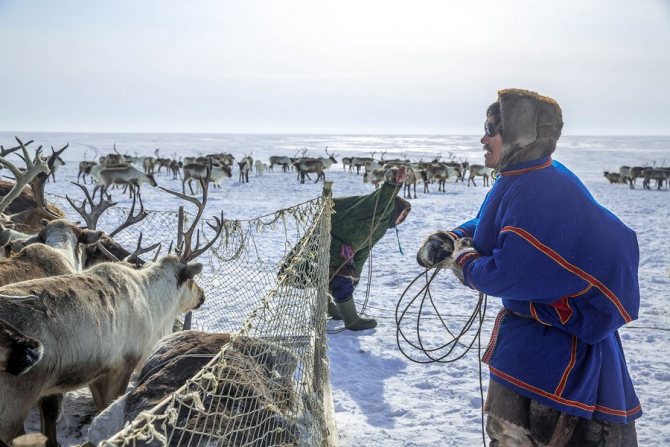
16 In their occupation, reindeer herders resemble American cowboys, only instead of untucked checkered shirts and wide-brimmed hats, they wear warm, windproof malitsa that retain heat even in extreme frosts. And minus forty here is so cool.
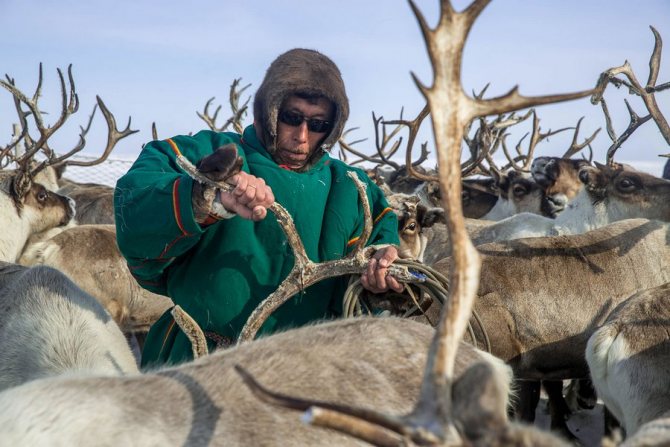
17 One might get the impression that they are some kind of savages, for some unknown reason living in the middle of the tundra, but many reindeer herders can read and write, among young people almost all have completed secondary education, and such a life is their own choice.
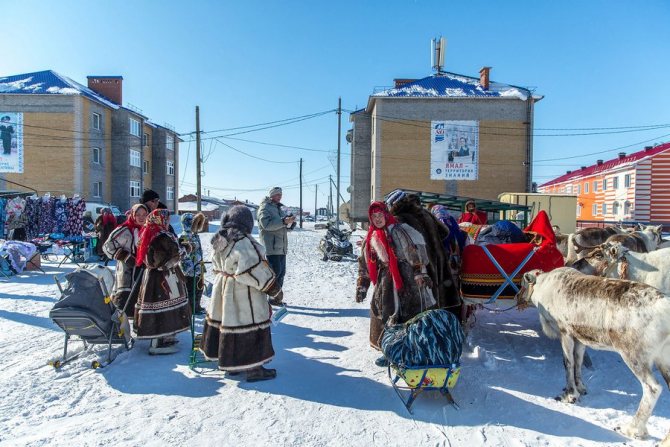
18 Once a year, in the spring, Reindeer Herder Day is held in Yamal. The holiday is nomadic, just like its “culprits” themselves: due to the vast territories and different climates, it takes place in different cities and towns throughout the month.
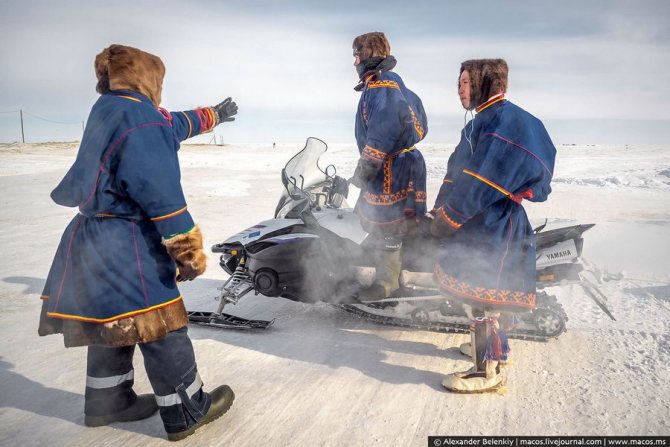
19 And if you want to see all the beauty and romance of life in the tundra, you should fly on these dates. Vivid impressions are guaranteed! 20 I found myself at a holiday in the village of New Port, which I told about separately. Reindeer herders from all over the endless tundra come to the regional center. They literally travel for half a day on reindeer. Sometimes longer.
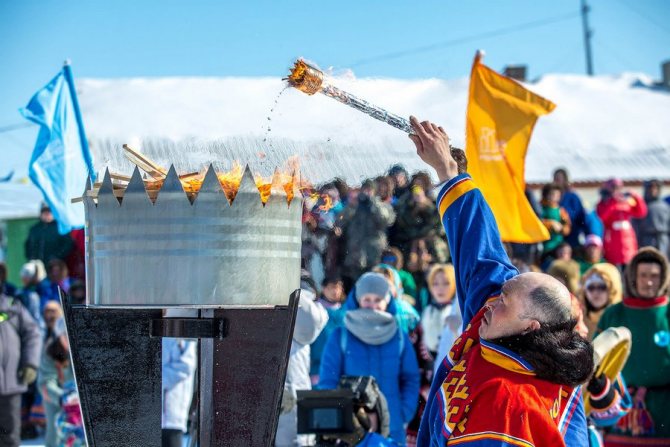
21 Our own event in Novy Port was held only for the second time in the last 30 years: for a long time we had to travel even further, to the village of Yar-Sale. It was possible to revive the tradition thanks to Gazprom Neft, whose field is located close to the village. The “Native Towns” social investment program operates in the Yamalo-Nenets Okrug and is aimed at supporting the indigenous population, whose traditional territories come from mining.
In addition to organizing events in support of the traditional culture of the peoples of the north and investing in the education of tundra dwellers, oil workers enter into socio-economic agreements with each family: they are entitled to cash payments or the purchase of equipment. The money can be spent on purchasing equipment, construction or repairs. And if a child in a reindeer herder’s family gets sick or an accident occurs, a helicopter flies out to them: otherwise it’s simply impossible to get to their inaccessible places of residence. So, the Nenets feel no worse than the American Indians, if not better.
For residents of the Far North, Reindeer Herder's Day is even more important than the Olympics. The Nenets, a small indigenous and gambling people of the north, wait for these games all year.
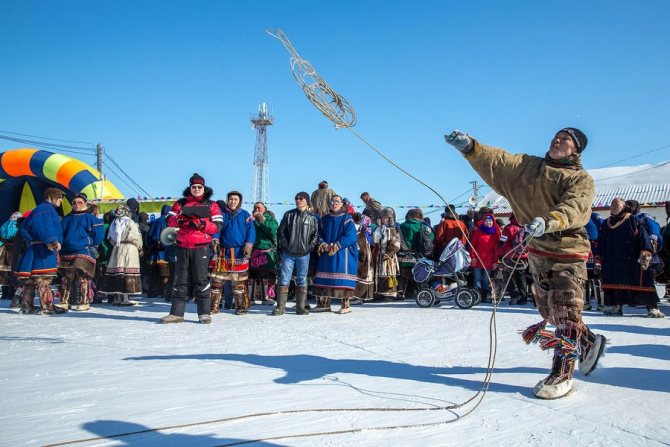
23 Competitions are held in national disciplines. One of the most favorite among the Nenets is throwing a tynzian at a trochee (throwing a lasso, depicting the capture of a deer chosen from the herd).

24 Among the deer they choose the most beautifully dressed ones. Women also take part, in many disciplines on an equal basis with men. Except for fighting, perhaps.
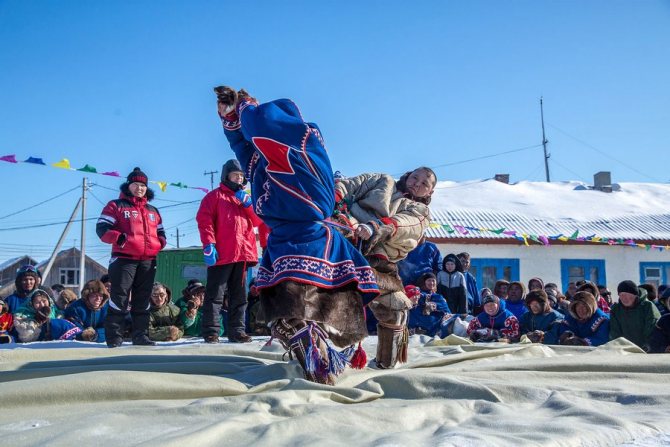
25 Traditional Nenets martial arts are similar to Japanese sumo and attract many spectators.

26 The fight takes place not only in the ring, but also next to it. Children have their own atmosphere.
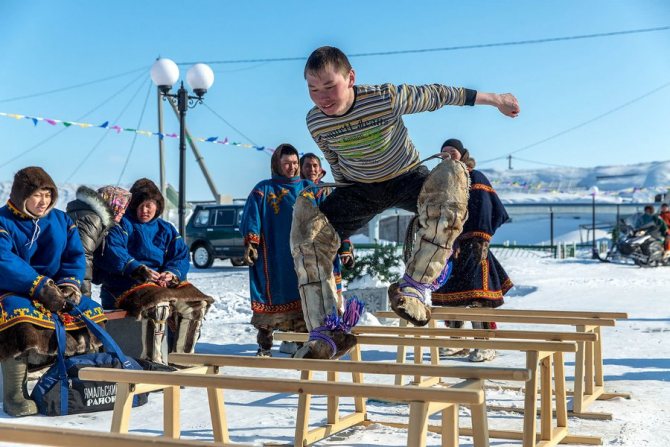
27 An important detail of the reindeer herder’s wardrobe is kiSY, Nenets felt boots. Made from deer skins. Uninhabited, windproof, waterproof. They just weigh a lot, so jumping in them is quite a competition!
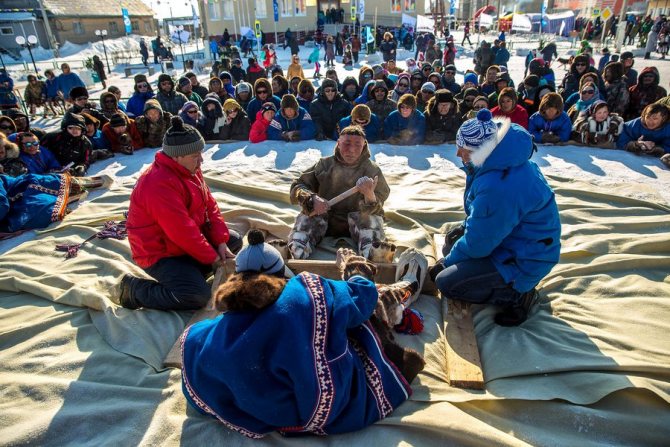
28 Stick tug is somewhat reminiscent of “our” arm wrestling. And in general, almost all Nenets competitions have something in common with what is familiar to Western culture. Such different peoples, but the roots are the same.
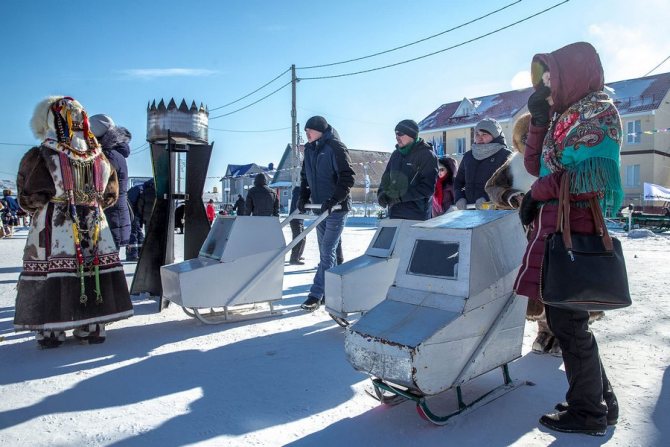
29 Baby strollers, popular in the far north, look strange. Angular and clumsily made “armored cars on sleds.” Local residents don’t pay attention to them; they themselves were driven around in them as children. I couldn't take my eyes off.
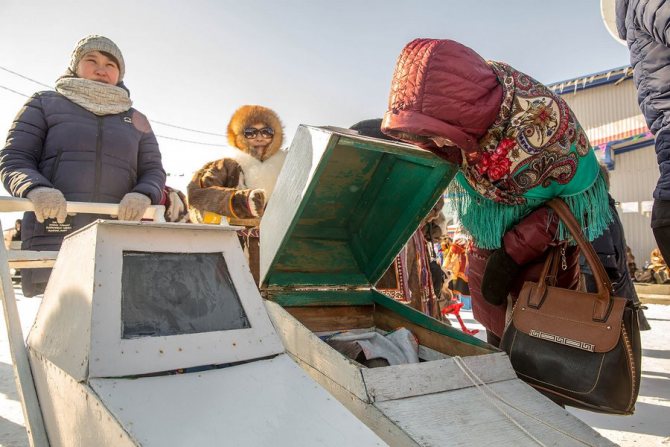
30 This is how the stroller is built from the inside.
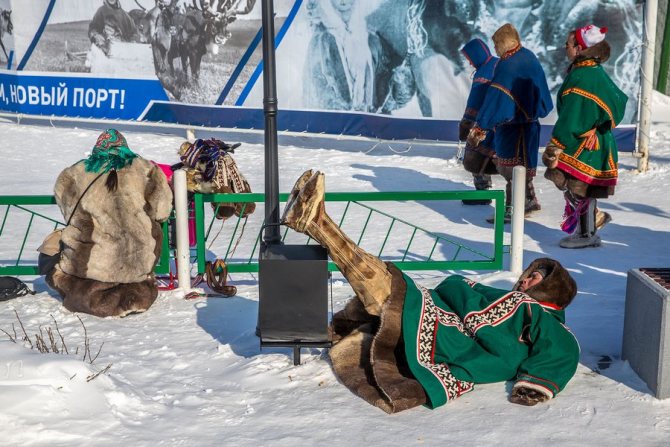
31 Tired. Tundra dwellers are not used to spending so much time with other tundra dwellers, and by evening many of them lose their strength.
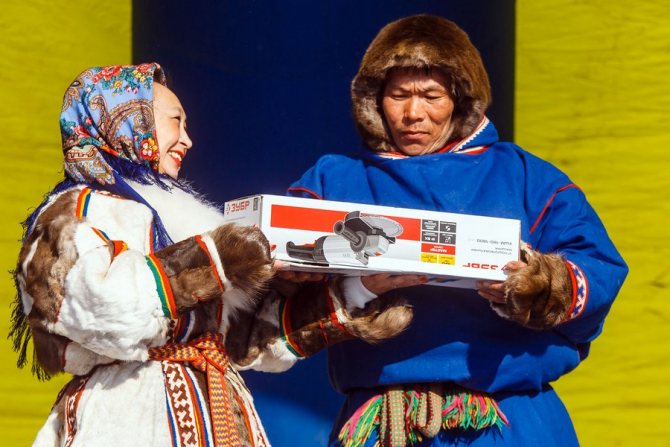
32 On stage, meanwhile, the winners of various competitions were awarded. Good prizes, dishes and household appliances. But the Nenets cannot be captivated by this.
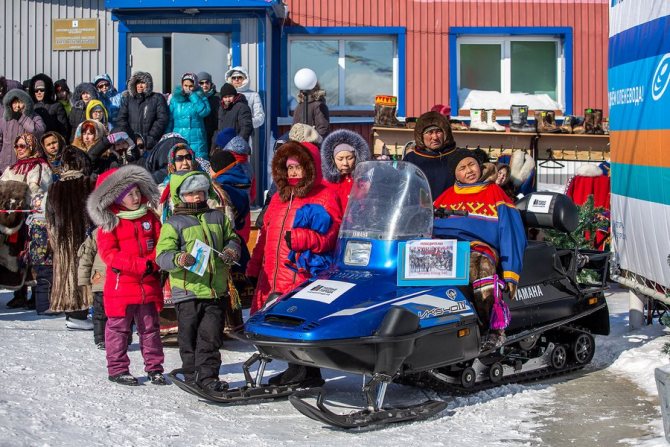
33 The main prizes were much more serious: the winners of the “Reindeer Olympics” received a brand new Yamaha snowmobile, and the prize fund also included a domestic “Buran” and diesel generators.
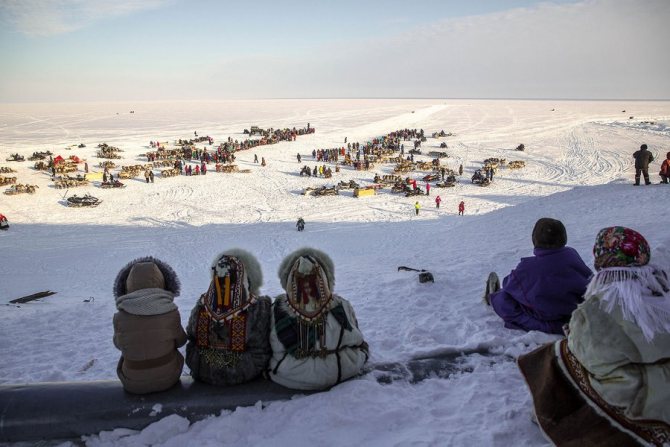
34 After lunch, everyone moved to the shore of the Ob Bay. The ice has already been cleared for the main and most spectacular competition, reindeer racing.

35
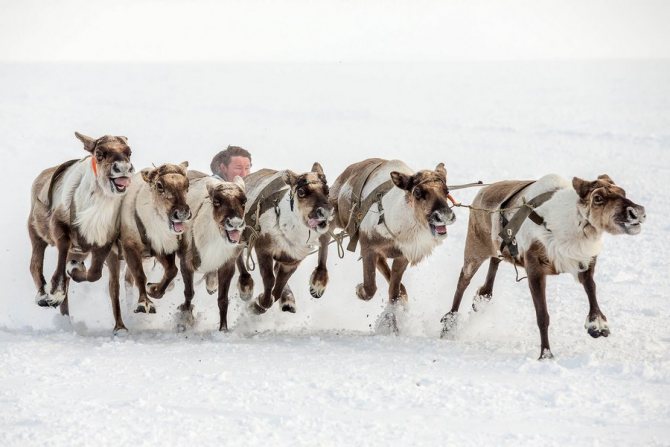
36 The essence of the competition is reminiscent of drag racing: two reindeer teams with “pilots” start at the same time, race as quickly as possible to the control point and return back. Whoever crosses the line first wins.
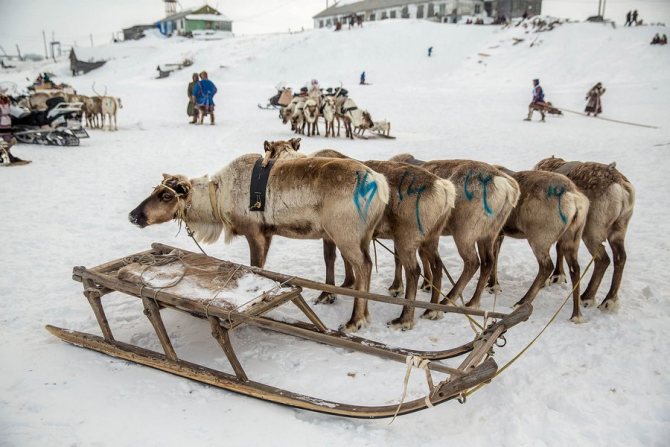
37 Racing reindeer are raised from childhood, and then it takes a long time to select team partners for them. This is a whole science, and a good business. To avoid cheating, the deer participating in the race are marked with a marker.
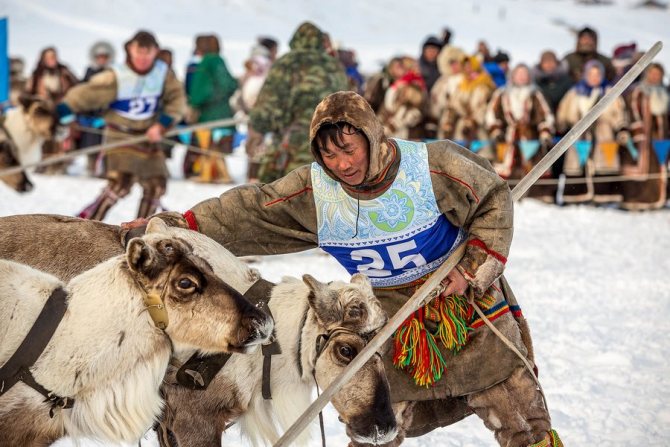
38 But even this does not help: the desire to come first is so great that the reindeer herders sometimes resort to real tricks. For example, one guy borrowed reindeer from a neighboring area: he took a couple from a team of winners who had participated a couple of weeks ago, and brought them to New Port. But the tundra dwellers know not only each other, but also the neighboring deer. Spectators and other participants easily identified the catch, and the participant was removed from the competition.
Source
Salary
Let’s not waste time, let’s immediately look at Rosstat’s indicators. Cash incomes in the Altai Territory differ sharply from incomes in the north. On average, a resident of the Altai Territory will receive almost 24 thousand rubles per month, while his average expenditure will be 18.5 thousand rubles. At the same time, a resident of Ugra will receive 53 thousand rubles, having spent 36.5 on consumer expenses. And the worker in Yamal will have the most. The average income there will be 84 thousand rubles, and the average expense will be 40 thousand rubles. Therefore, many people think that working on a rotational basis is profitable. What would be small for the north is considered a large salary for Barnaul.
Continuing to talk about money, it is worth mentioning that any work in the Far North is subject to the northern coefficient. In addition, residents of the Far North have certain benefits and long vacations (44 days). Moreover, it is believed that it is better to save some money and go on vacation abroad, says Anton Stolkov.
Despite all the above benefits, working in such harsh conditions is not for everyone. You need to cope with emotional stress. According to Anton, the inhabitants of the North have a different mentality than we do in Altai. There, people are used to discussing business issues right away, without unnecessary conversations about the weather and well-being. Therefore, someone for whom support and understanding is important can easily become depressed without family. This is due not only to hard work, but also to difficult living conditions. Therefore, both Anton and Stanislav say that they would not repeat the northern experience, unless, of course, there is a serious promising proposal.
Olesya Serebrennikova

